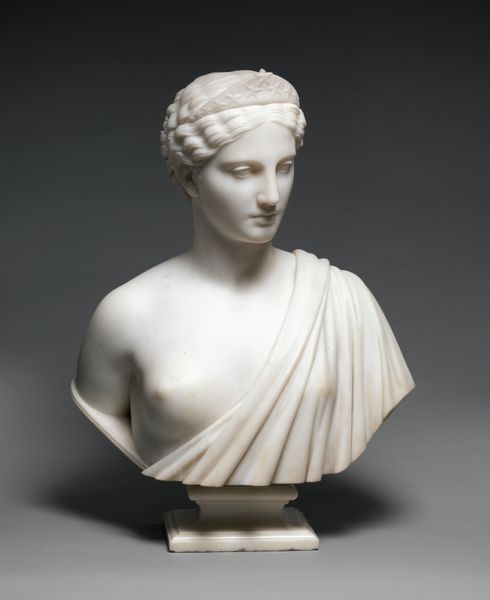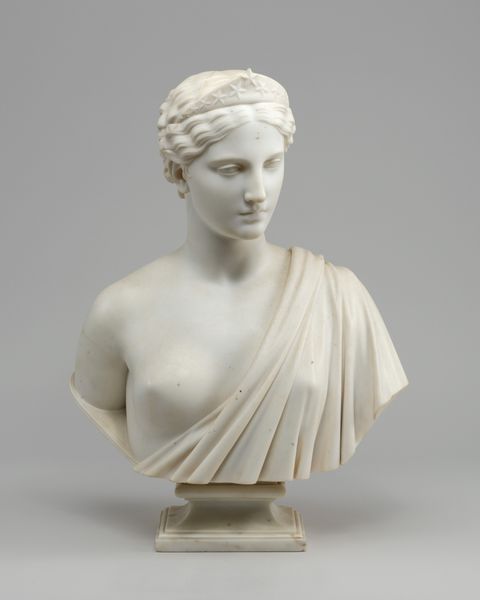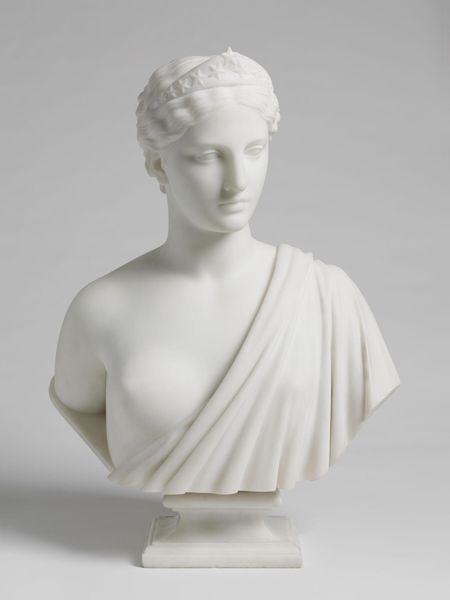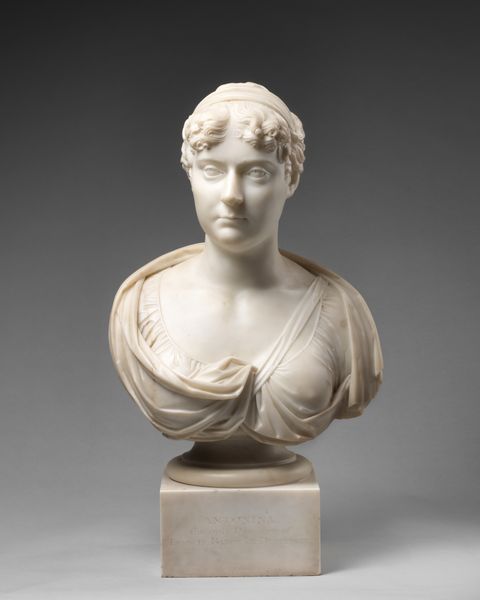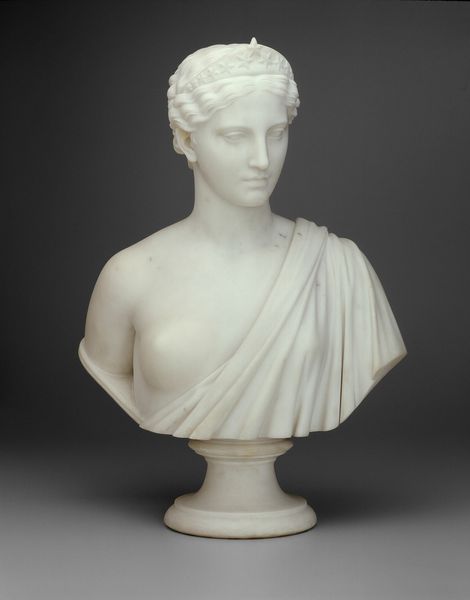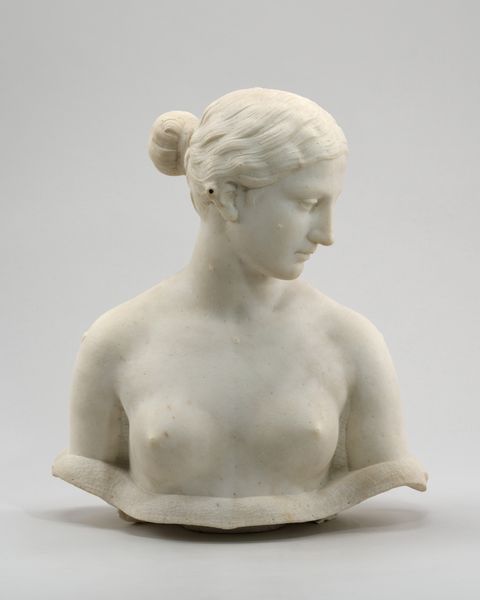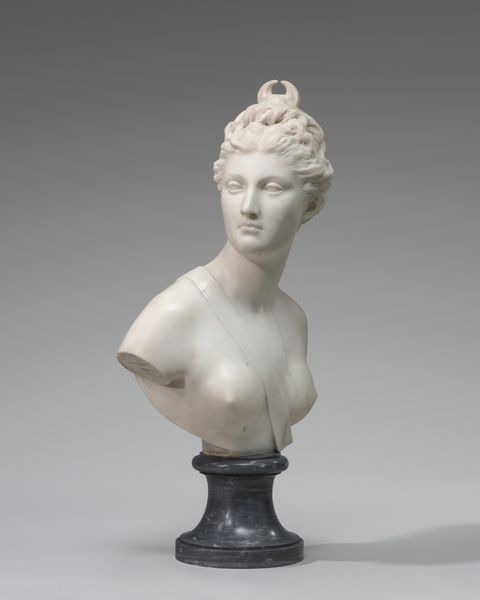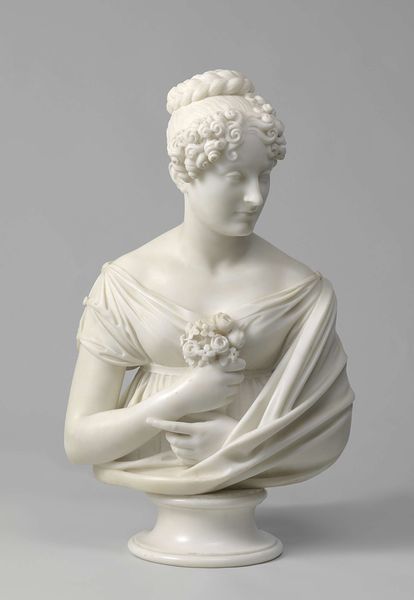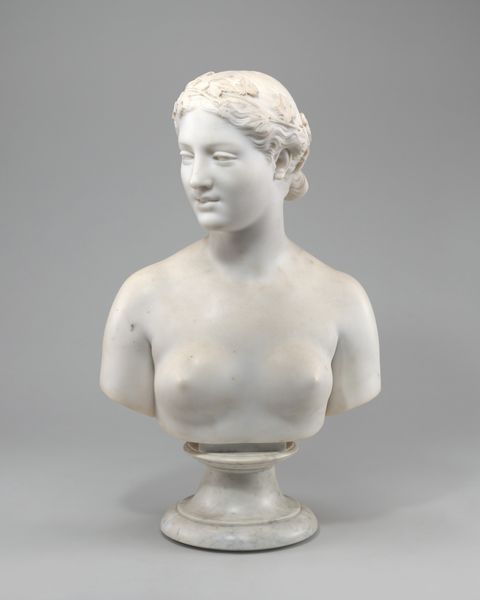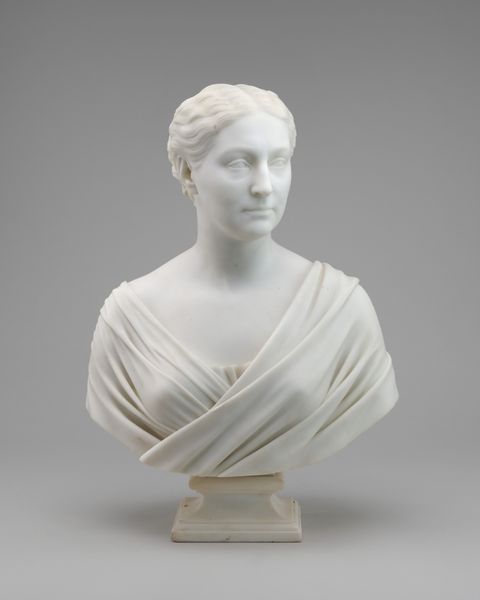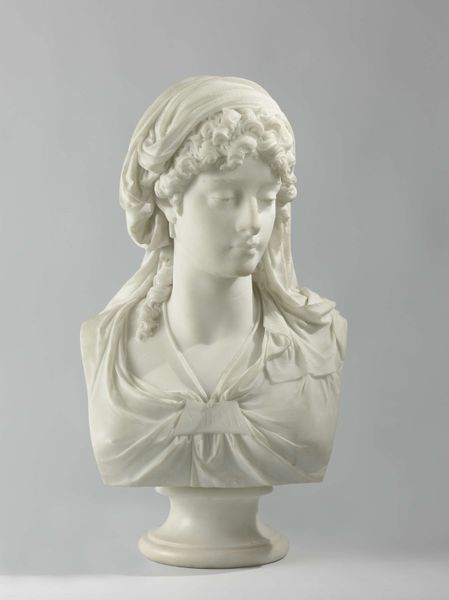
Dimensions: overall: 60.96 × 46.36 × 29.21 cm (24 × 18 1/4 × 11 1/2 in.)
Copyright: National Gallery of Art: CC0 1.0
William Henry Rinehart made this marble bust, called "Penserosa," at some point in the mid-19th century. The title suggests a state of wistful reflection, but what exactly might be on her mind? The work revives the classical style that was fashionable at the time. Thinkers and artists looked back to ancient Greece and Rome for inspiration. This wasn't just about aesthetics. It reflected a desire to connect with the democratic ideals and philosophical traditions of the ancient world. But, of course, those ideals were being selectively mined, particularly in relation to contemporary class and gender structures. The woman's downcast eyes, and the way that her modesty is foregrounded, speak to the restrained expectations of women at that time. Understanding this work fully means delving into the cultural and institutional contexts that shaped it. Think of the art academies, the patronage systems, and the social norms that influenced Rinehart and his audience. It also means reflecting on our own position. As historians, we use all available tools, from primary source documents to critical theory, to interpret the past and to understand art’s continuing resonance in the present.
Comments
No comments
Be the first to comment and join the conversation on the ultimate creative platform.
